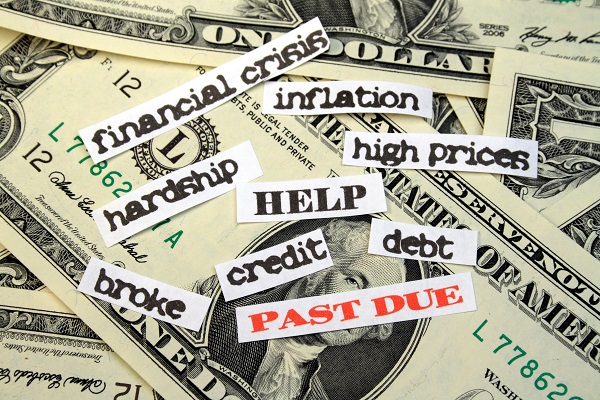Companies increasingly realize that employee financial wellness is crucial to their bottom lines, and to employees stressed over money—particularly as they approach retirement knowing their savings are falling far short.
A study at TradeSchools.net unearthed some of the reasons that people are doing so poorly at saving for the future: the timing and circumstances surrounding their education (if any) regarding personal finances.
The situation is serious. Financial stress takes a toll not just on employees but also on a company’s bottom line, via reduced productivity, increased health issues with correspondingly higher health care costs and lost time at work.
And that financial stress is increasingly getting worse, to the extent that a recent study finds that American workers are suffering from a form of financial post-traumatic stress disorder.
So employers are trying to take action.
With 49 percent of employees admitting to spending time at work dealing with their money troubles—something that can cost companies 1–2 percent of payroll for the time lost, which can amount to the hundreds of millions of dollars for large corporations—not to mention the toll that financial stress takes on employee health and thus adds to the cost of health care benefits, the rise in wellness programs is understandable.
What may be one of the most important facets of those wellness programs could be the way they tackle financial education and wellness.
Not only are employers trying to help employees better manage their finances, so that they won’t spend so much of their time mooning over their money woes instead of working, employees themselves are going so far as to work past retirement age or take outside jobs in the gig economy—women in particular—as they try to make ends meet and still keep up with such financial objectives as paying off student loans or preparing for retirement with a too-small retirement account.
According to Aon Hewitt’s report “Hot Topics in Retirement and Financial Wellbeing,” 92 percent of employers are likely to expand their financial well-being programs beyond a focus on retirement; in fact, 86 percent are likely to tackle the link between financial and physical/emotional well-being.
But for some, those educational moves might be too little, too late—particularly for those close to retirement. Among the findings of the TradeSchool.net study were the number of people already in deep financial trouble, as well as just how deep that trouble is.
For employers debating whether to add a financial wellness facet to their benefits packages, here are 8 financial woes that cause financial stress for workers.
||
8. The average U.S. household is $90,000 in debt.
It’s really easy to get into debt if you’ve never been taught to manage money—or if the lessons came after you were already underwater. And what’s really scary is that between credit cards, student loans, and car payments, the bills mount at an alarming rate.
The median household income in the U.S., by the way, is just over $55,000, which means that household debt is almost twice the amount of household earnings.
|7. Many say they were never taught about finances.
While it was more common for people to learn about finances from their parents while they were growing up (43.11 percent say this was how they learned), an unfortunate 3.38 percent of respondents say they never learned. How sad is that?
Others learned from friends (2.04 percent), peers and colleagues (3.13 percent) or in school (3.68 percent in middle school, 11.93 percent in high school and 14.52 percent in college).
|
6. Many more learned after facing financial hardship.
A shocking 16.81 percent didn’t experience an education in finances till after they faced financial hardship—a terrible way to learn.
If you need verification of that, bear in mind that those who learned about finances only after facing personal financial hardship were the most likely to report being $100,000 to $249,000 in debt.
On the other hand, respondents who say they learned about the rigors and repercussions of debt in middle school were the most likely to report no debt. Over 31 percent had no debt, and around 20 percent owed less than $5,000.
|5. Many were already in debt by the time they learned what debt is and can do.
Only 11.3 percent of respondents who say they learned about finance after facing financial hardship say they were not in debt at the time.
Others were not so fortunate, with more than 74 percent of respondents acknowledging that they held various levels of debt by the time they learned about finance—and only after facing financial hardship.
|
4. They wish they knew more about personal finance.
The top 5 areas of personal finance respondents say they wish they knew more about are how to grow their income; how to invest; how to save; understanding the stock market; and budgeting.
A lack of understanding in any of these areas can prove deadly to a person’s financial well-being, and while many financial wellness programs try to address these issues after the fact, for some it’s a tough road back from debt.
|3. Women in particular are short on funds.
Less than 63 percent of Americans don’t have enough money in savings to cover a $500 emergency at any given time, and many live paycheck to paycheck.
While doing so may still mean having enough money to cover bills and immediate needs, it’s not enough to save toward retirement or other long-term goals.
Scraping by is something more often done by women; 74 percent of male respondents say they never live paycheck to paycheck; only 26 percent of women could say the same. In fact, 53.71 percent of women say they “always” live paycheck to paycheck, with 42.89 percent saying they “often” do.
|
2. Debt levels are higher for women.
Women are less confident about finances, and it unfortunately shows in their levels of debt compared with their male counterparts.
While 17.2 percent of male respondents admit to between $1–$4,999 in debt—higher than the 15.6 percent of women who do so—women are far more likely to carry debt loads of $25,000–$49,999 (13.7 percent compared with 10.6 percent), $50,000–$99,999 (12.0 percent compared with 8.8 percent), $100,000–$249,999 (12.5 percent compared with 10.1 percent) and even $250,000–$499,999 (4.9 percent compared with 4.0 percent).
That highlights the need for financial wellness programs to be more directly targeted for certain demographic groups, rather than a one-size-fits-all approach.
|1. Lack of financial literacy can directly affect retirement preparedness.
A study from the Pension Research Council found that people who better understand finance are more likely to contribute to retirement plans and even contribute more to those plans.
The study, “Employee Financial Literacy and Retirement Plan Behavior: A Case Study,” considered whether, and how much, variation might result from financial literacy or the lack thereof, and also examined changes in employee plan behavior one year after employees completed a learning module about retirement planning.
Those who took part in the learning module increased their participation and contributions, leading to the conclusion that increased financial literacy does boost employee awareness and enhance retirement readiness.
Complete your profile to continue reading and get FREE access to BenefitsPRO, part of your ALM digital membership.
Your access to unlimited BenefitsPRO content isn’t changing.
Once you are an ALM digital member, you’ll receive:
- Breaking benefits news and analysis, on-site and via our newsletters and custom alerts
- Educational webcasts, white papers, and ebooks from industry thought leaders
- Critical converage of the property casualty insurance and financial advisory markets on our other ALM sites, PropertyCasualty360 and ThinkAdvisor
Already have an account? Sign In Now
© 2024 ALM Global, LLC, All Rights Reserved. Request academic re-use from www.copyright.com. All other uses, submit a request to [email protected]. For more information visit Asset & Logo Licensing.












